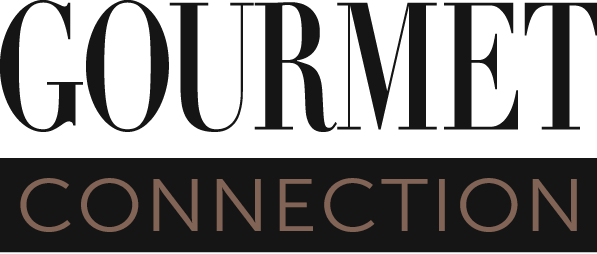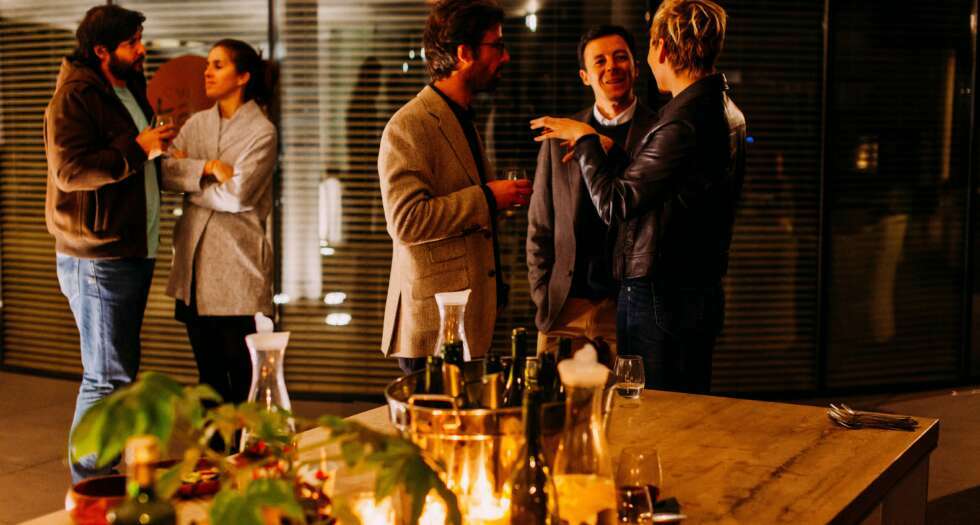Close contacts with the press and media are an important element of our work as a PR agency in the food industry. This is how we plan and conduct a successful editorial visits.
As a PR agency specialized in F&B, there are numerous ways to approach the media. One of them are classic editorial visits. We usually visit the relevant publishing houses in major media cities and directly present our clients’ products to the editors. This can be done as part of an editorial event, in a casual after work atmosphere with snacks and drinks, or at a flying buffet hosted by a top chef. Alternatively, the visit can be organized digitally, with sample packages being sent to the editorial office in advance. Both options have the same goal: to find common topics and connecting factors.
With our many years of experience as a PR agency for wine and food, we provide tips for a successful visit.
Why editorial visits?
Many publishing houses are increasingly under pressure, with only a few editors covering more and more positions. Therefore, even before Corona, there wasn’t always enough time to accept invitations outside the editorial office, especially in the evening. We know from our experience as a food, lifestyle and hotel PR agency that many editors really appreciate it when you make it as easy as possible for them to participate by coming to their offices.
The right start
First of all, as with many aspects of food and wine PR, setting a goal is important. We start by sorting out the following questions: what’s the target regarding food, wine and lifestyle media? In which way do we want to present the product? What kind of outcome is realistic? In any case, the magazine or news outlet should have a similar target group and topics as our clients. Thanks to our many years of experience in food and wine PR, we know the media landscape very well and are able to recommend just the right publications. For example, women’s and lifestyle magazines are suitable for wines with a young target group, but so are cooking magazines with innovative recipes.
Once the media list has been determined, the next step is to get in touch with the journalists. It’s important to directly divulge the specific product or news, because without a tangible benefit or a suitable topic, editors will be reluctant to take the time.
Six tips for a successful editorial visit
How does an editorial appointment actually work? Good preparation is essential:
- Prior media observation helps going into the meeting with a few ideas and suggestions. Which topics are usually covered? Which ones might fit the product and in what context? As an F&B PR agency, we always give input on how we anticipate a cooperation in order to ensure an effective conversation.
- Holding a presentation about the brand is helpful, but it should be as short and accurate as possible. This introduction is for editors who are not yet familiar with the product, as it helps them to place it in context.
- Working with lots of atmospheric images is highly recommended. This way, we can convey emotions, and the participants get a precise idea of the brand’s color scheme and thematic focus.
- Creativity and personal interaction are more important than ever. Editors receive hundreds of emails, messages and ideas every day. As a result of our food and wine PR experience, we know that the value of a creative presentation, and that’s how we stand out from the crowd.
- If the visit takes place digitally and not as an event on site, it’s important to keep an eye on the time! Nobody likes unnecessarily long meetings, this also applies to editors. A maximum of 45 minutes should be allocated for a digital meeting with one media company. In roundtable discussions it can take a bit longer until everyone has had a chance to speak and discuss their ideas.
- Follow-up: after the event, we provide all participants with the necessary information, such as press releases or images. In addition, we discuss any further questions.
Benefits for successful F&B PR
All arrangements and appointments have been made and everything is set. But what’s the result going to be? Mainly: personal interaction. On the one hand, we maintain our close contact with the editors, on the other hand, the participants can experience the product, for example a new wine, first-hand. This way, we build a lasting impression. Reading a press release about it simply doesn’t have the same effect. The personal exchange that takes place during such visits is often the first step toward long-term cooperation. Therefore, editorial visits are very useful for a successful marketing mix.
Creative exchange offers added value
Editorial visits are great as they often produce specific ideas. After all, no one knows the right print, online or social fit better than the respective editors themselves. Suggestions for topics, product tips or social media integrations can be discussed and modified in direct exchange. That’s a creative process from which both sides benefit. Along the way, as a F&B PR agency we assess the ideas from a PR perspective, while our clients answer any questions from a brand point of view.
Defying Corona: digital editorial visits in F&B communications
These days it’s not easy to sit down with ten or twenty participants, drinking a glass of wine, and planning the year. However: editorial visits can work digitally! With our long-term Prime Connection client Blanchet, we digitally visited major publishing houses and were able to host an exchange that was as creative as it was inspiring. In advance, participants were sent product packages which we designed and put together with great attention to detail. In addition to the two new Blanchet Jolie wines, the assortment included ingredients for drinks, colorful decorations and straws to bring a certain summer feeling into the (home) office. As a communications agency for food and beverage, we were thus able to show the new product line and the brand’s realignment in an appealing way. A presentation with an integrated color scheme and stylish mood boards brought the brand to life, so that we could develop ideas in direct exchange with all media that exactly fit the brand’s objective.
More about our services.





